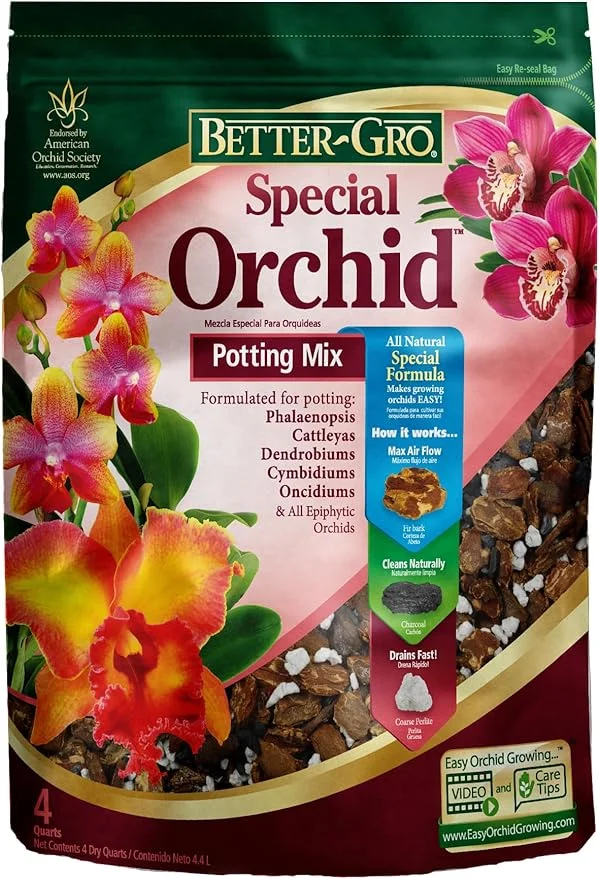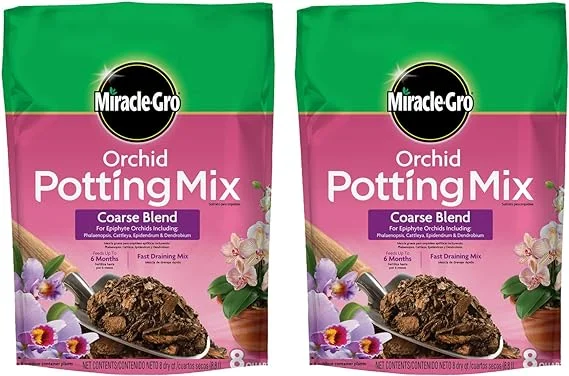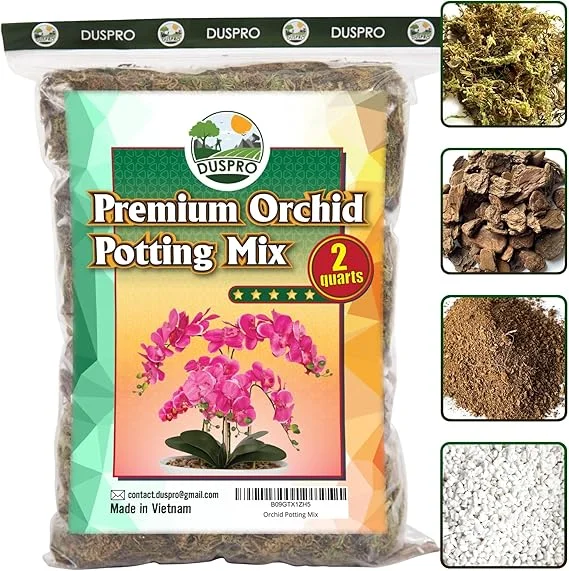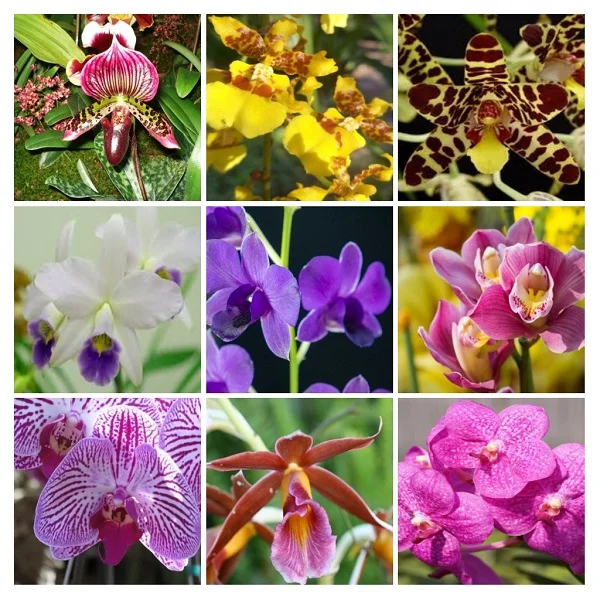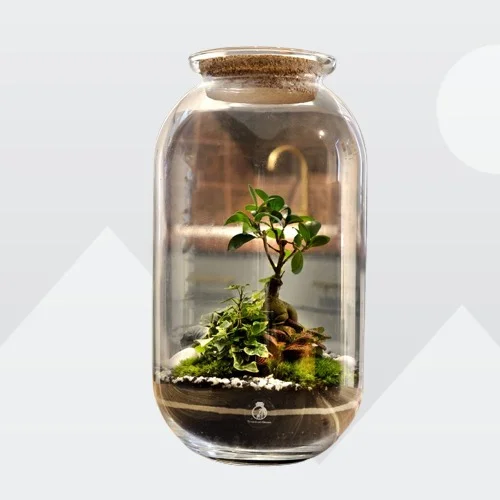Queen's Tears Plant (Billbergia Bromeliads) Care Indoors, Propagation, Problems and Solutions
Some links in this post may be affiliate links
Queen's Tears Plant (Billbergia Bromeliads) bloom in in bright indirect light, warm and humid conditions and moderately moist, fertile, well-drained orchids potting soil coupled with fortnightly feeding in the growing season.
Billbergia Bromeliad also called Friendship Plant is one of the easiest Bromeliad varieties and is grown for the beauty of its drooping showy flower-heads and leathery, arching long grass-like leaves.
The drooping flower-head with about 3 inches long bracts and the 1 ft long, arching leaves which turn reddish under good light look spectacular in a hanging basket. Billbergia Bromeliads are among the best flowering plants for a hanging basket.
The common name, 'Queen's Tears', is due to the drops of nectar that the plant produces when it is touched or is moved. While the common name, 'Friendship Plant', is because it is easy to share with friends from the pups (offsets) that form at the base of the plant.
The usual pattern in Billbergia Bromeliads like in Flaming Sword Bromeliads is a rosette of leathery, strap-like foliage and flower-head which arises on a stalk from the cup-like center of rosette.
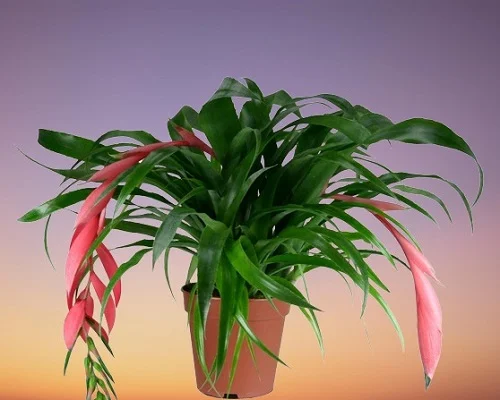
Botanical name: Billbergia
Family: Bromeliaceae
Sufamily: Bromelioideae
Common names: Queen's Tears Plant, Friendship Plant
Origin
Billbergia Bromeliads are native to Brazil, Paraguay, Uruguay and Argentina.
Flower
Queen's Tears Plant matures at the age of 2-3 years and flowers quite easily in spring and the display may last several months. Once the flower-head fades, the rosette of leaves begins to die and is replaced by offsets (pups) at the base. The display of the flower-head is due to the presence of long-lasting showy bracts; true flowers are small and short-lived.
Varieties
The most popular of the Billbergia Bromeliads for growing indoors is the Billbergia nutans. Another of the Billbergia Bromeliads that is common is Billbergia windii which is larger, with the flower-stalks being about 18 in. long and the foliage is grey-green.
Is Queen’s Tears Plant Toxic?
Queen's Tears Plants are non-toxic to humans and pets. They are among plants safe for cats and dogs. However, the leaves bear short spines which may cause physical injury if handled with bare hands. Always wear gloves when handling these bromeliads to prevent injury.
Why Grow Queen’s Tears Indoors?
Here is why you should consider adding Queen’s Tears to your indoor plant collection:
- Low maintenance: It requires minimal care compared to other tropical plants.
- Hardy and resilient:It tolerates neglect and adapts well to indoor conditions.
- Beautiful blooms: It bears exotic, pendulous flowers in pink, blue, and yellow hues
Where to Buy
If you would like to add Queen's Tears Plants to your collection, you may get them online from Etsy (Link to Etsy).
Queen's Tears Plant Indoor Care
Queen's Tears Plant is low-maintenance, requiring minimal care compared to other tropical plants. In this guide, we will cover everything you need to know about caring for Queen’s Tears Plant indoors, from the best lighting conditions to watering techniques and propagation.
Queen's Tears Bromeliads flourish in bright indirect light (filtered light), average warmth of 18-280C, high humidity of 60-70% and moderately moist, rich, well-drained, orchids potting soil coupled with fortnightly feeding during the growing season.
Billbergia Bromeliads are sensitive to chlorine and other chemicals dissolved in water, therefore water with chlorine-free water only that is at room temperature to avoid plant shock. Keep reading for more on the growing conditions and how to achieve them.
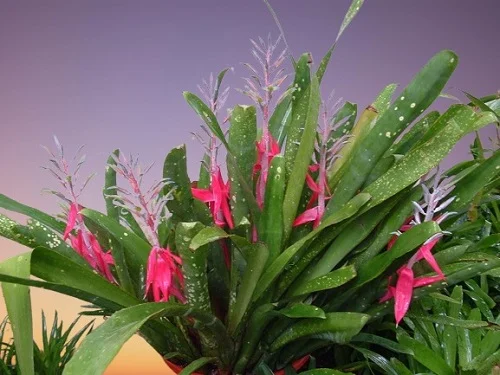
Watering
Like with other rosette Bromeliads, Queen's Tears Bromeliads require that the central 'vase' be filled with water at all times. Empty and refill the 'vase' regularly to prevent growth of bacteria which may cause the water to become smelly.
Use only chlorine-free water to water these plants as they are sensitive to chlorine and other chemicals that may be dissolved in water.
Water the soil only when it dries to keep the roots moist. Avoid soggy soil as it can lead to root-rot and eventual death of the Bromeliad.
Light Requirements
Queen's Tears Plant grows best in bright light away from direct sunlight. Bright light is necessary to promote flowering. However, direct sunlight will cause the leaves to lose their dark-green color and will appear washed out with pale brown leaf patches.
If the light is too little, growth may slow down and the plant may produce fewer blooms. Therefore, move the plant to a brighter spot or instal a grow light where the natural lighting is not sufficient.
Regularly rotate the pot to ensure that the bromeliad receives light on all sides for uniform growth to prevent unbalanced growth.
Outdoors, Queen's Tears Bromeliad can be grown in a shaded place like under a tree where it is shielded from direct sunlight.
Temperature and Humidity
Queen's Tears thrives in an average warmth of 18-280C. Keep it away from drafts to avoid sudden changes in temperature which can cause reduced growth.
However, to bring the Billbergia Bromeliad to flower requires temperatures above 260C. You can achieve this temperature by taking this plant outside during the hot season but put it under a light shade.
Queen's Tears Bromeliad requires a high humidity of 60-70% to thrive. If the humidity is too low, the plant will respond with brown leaf tips and edges.
To up scale humidity, set the pot on a wet pebble tray or grow the plant is a well-lit bathroom or kitchen. Ensure that there is good air circulation for to prevent fungal diseases.
Feeding
Feed your Queen's Tears Plant with a liquid fertilizer (foliar feed) every 2 weeks during the growing season to encourage a lush growth. Do not feed in the cold season as growth is minimal at this time and it may lead to fertilizer burn.
Potting Mix
The best soil for Queen's Tears is orchid potting mix that is rich in organic matter, loose, free-draining to prevent it from getting soggy while providing the required nutrients.
Repotting
Repotting Queen's Tears Bromeliad is not necessary as its roots are tiny and are unlikely to fill the pot. Pot it in a wide, shallow, heavy pot to prevent it from toppling over as it can become top-heavy. In addition provide support for the plant to help keep it upright and prevent it from toppling over as it can get top-heavy. Check out these ceramic pots with drainage holes and saucer on Amazon.
Pruning
Pruning Queen's Tears Plant involves removal of dead leaves to keep the plant neat and minimize pest and disease infestations. This also allows adequate room for the new plants (pups) to grow.
Remove the dead foliage by cutting at the base with a sharp, clean knife or with a sharp, clean pair of pruning scissors to minimize injury and disease infestations.
Propagation
Billbergia Bromeliads propagation is best done from offsets (pups) appearing at the base of the plant.
Queen's Tears Plant propagation from offsets (pups)
- When the Queen's Tears Plant offset is several months old or 1/3 to 1/2 the height of mother plant, separate it from the mother by cutting with a sharp, clean knife or scissors.
- Ensure the offset (pup) has some roots attached to it as they are necessary to provide support for the pup.
- Plant the offset shallowly in loose, free-draining, bark soil. Use a shallow heavy pot to prevent the plant from toppling over as it can get top-heavy.
- Also, ensure the bromeliad is well supported to prevent it from toppling over as the root system is small.
- Place the set up in a warm, well-lit spot until the new Billbergia Bromeliad is well established after which routine care can begin.
Related: How to Propagate Bromeliads from Pups (Bromeliad Propagation from Pups)
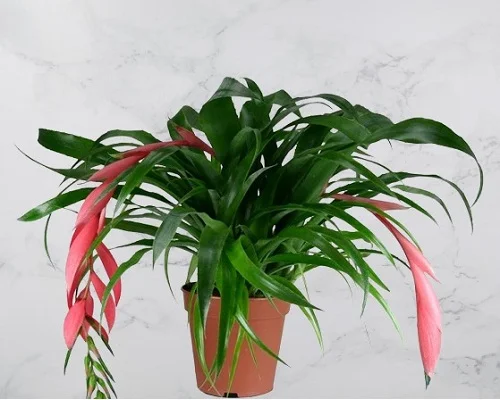
Queen's Tears Plant Problems with Solutions
Billbergia Bromeliads problems include brown leaf tips, plant dying, drooping leaves, leaf patches, lack of blooms, pests and diseases among others. Read on for more on these problems, their remedies and solutions.
Pests
The common pests in Queen's Tears Plant are scales and mealy bugs. Isolate the affected plant to prevent spread to other plants and treat with neem oil or insecticidal soap as per the manufacturer's recommendations.
Brown leaf tips
Queen's Tears brown leaf tips are caused by too low humidity. To raise humidity, set the pot on a wet pebble tray or use a cool mist humidifier. You can also grow the bromeliad in a well-lit bathroom or other moist areas in the home.
Plant dying
If the Queen's Tears Plant has not flowered, the cause of death is root-rot disease due to soggy soil. Slip the plant out of its pot and inspect the roots. Mushy brown-black roots indicate root-rot.
If the Billbergia Bromeliad has flowered then rotting and death of the rosette which bore the flower-stalk is natural to give room for the new plants (pups).
Remove the dead foliage from thebromeliad by cutting at the base with a clean knife or a pair of scissors to create space for the new plants.
Lack of blooms
One possible reason Queen's Tears Plant may lack blooms or fail to flower is insufficient light. Move the plant to a brighter spot under bright indirect light or use a grow light to supplement if the natural light is not enough.
The second possible reason Queen's Tears may lack blooms is nutrients deficiency. Fertilize the plant every 2 weeks in the growing season with a phosphorous-rich fertilizer to encourage flowering.
Pale brown leaf patches
Pale brown leaf patches in Queen's Tears Plant are due to exposure of the plant to hot direct sunlight. Protect it from direct sunlight or move it to a shadier spot where it will receive bright light away from direct sunlight.
Dark, soft, drooping, long leaves
Queen's Tears Bromeliad dark, soft, drooping, long leaves are caused by too little light. Move the bromeliad to a brighter spot and ensure it is receiving bright light or grow it under grow lights.
In addition, turn the pot regularly to ensure that the plant receives light on all sides for uniform growth and prevent a lop-sided growth.
Conclusion
Queen’s Tears Plant (Billbergia Bromeliad) is a low-maintenance, resilient, and rewarding houseplant that offers stunning blooms and easy propagation. With the right care, it will flourish and brighten up your indoor space for years to come.
Frequently Asked Questions
1. How much sunlight does Queen’s Tears need?
Queen’s Tears thrives in bright, indirect light but can tolerate lower light conditions.
2. How often should I water my Queen’s Tears Plant?
Water your Queen’s Tears Plant? when the top 1-2 inches of soil is dry. Avoid letting water sit in the soil for too long.
3. Why isn’t my Queen’s Tears Plant blooming?
Your Queen’s Tears Plant may need more light or fertilizer. Ensure it’s in a bright location and fertilize monthly during the growing season.
4. Can Queen’s Tears survive in low humidity?
Yes, but Queen’s Tears flourishes in higher humidity. Use a pebble tray or a humidifier if your home is dry.
5. How long does Queen’s Tears live?
Queen’s Tears is a monocarpic plant; the mother plant blooms once, then produces pups before eventually dying back. The new pups continue the plant’s life cycle.
You liked it? Share on social media.
Related Content
Amazon Associates Disclosure
Homeplantsguide.com is a participant in the Amazon Services LLC Associates Program, an affiliate advertising program designed to provide a means for sites to earn advertising fees by advertising and linking to amazon.com.
